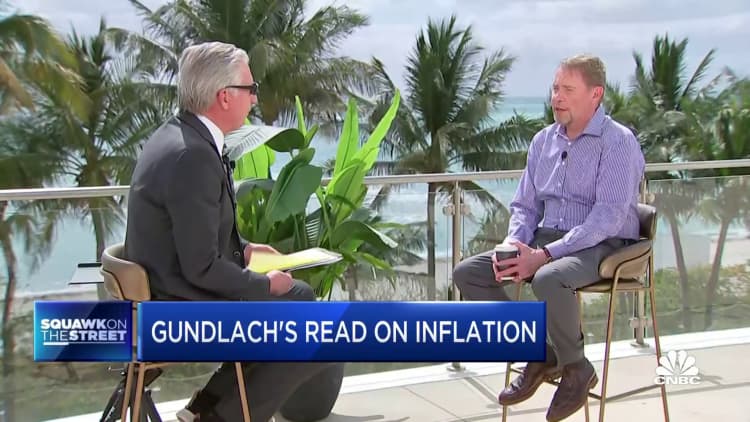The traditional 60/40 diversified portfolio may have investors in the red so far in 2022, but reports of its death have been "greatly exaggerated," Wells Fargo analyst Douglas Beath said.
In fact, it could be headed for double-digit returns, he wrote in a note Tuesday.
The investment strategy, which puts 60% of assets in stocks and 40% in bonds, has had a rough year. A hypothetical balanced portfolio using the S&P 500 index and the Bloomberg U.S. Aggregate Bond Index dropped 16.1% in the first half of the year, Beath pointed out.
Bonds are supposed to be a hedge during times of stock market volatility, providing positive returns when stocks go down. Except that this year, both bonds and stocks have declined in tandem. At the same time, inflation is at 40-year highs, rising 9.1% annually in June.
"What we've witnessed so far this year in capital markets is unusual," Beath wrote.
Wells Fargo is echoing a view that Morgan Stanley promoted last week, when the investment bank said a 60/40 portfolio should post a solid 6% annual return over the next 10 years.
To be sure, there are doubters. Jeffrey Gundlach, CEO of DoubleLine Capital, is among those who are against the 60/40 portfolio. He told CNBC's Bob Pisani earlier this year that he has been advising against the model for the past two years and instead recommends 25% in commodities, 25% toward cash, 25% in stocks and 25% long-term Treasury bonds.

Last September, Michael Rosen, chief investment officer of Angeles Investments and Angeles Wealth, wrote in an op-ed for CNBC that the 60/40 portfolio has "reached its expiration date."
However, the steep declines in the diversified portfolio are not unprecedented, Beath said.
History shows that years when the hypothetical 60/40 portfolio gave negative returns exceeding 1% were usually followed by double-digit annualized returns over the following three years, he noted.
"In the rebound phase following calendar years of negative 60/40 performance, stocks outperformed bonds by a significant margin, averaging 19.2% versus 4.5% respectively," Beath said.
In addition, recent stock and bond market losses have improved valuations for the diversified portfolio, he wrote. When looking at capital market assumptions, which include hypothetical return expectations over 10 to 15 years, the portfolio also has higher projected risk-adjusted returns, he said.
As inflation peaks and gradually declines, as expected, the correlation of stocks and bonds should return to negative or close to zero, Beath wrote.
"The historical returns of stocks and bonds, combined with more attractive valuations after the recent downturn plus long-term CMA projections, indicate to us that the 60/40 portfolio is alive and well and that it should continue to serve as a solid foundation for long-term investors," Beath added, referring to capital market assumptions.





